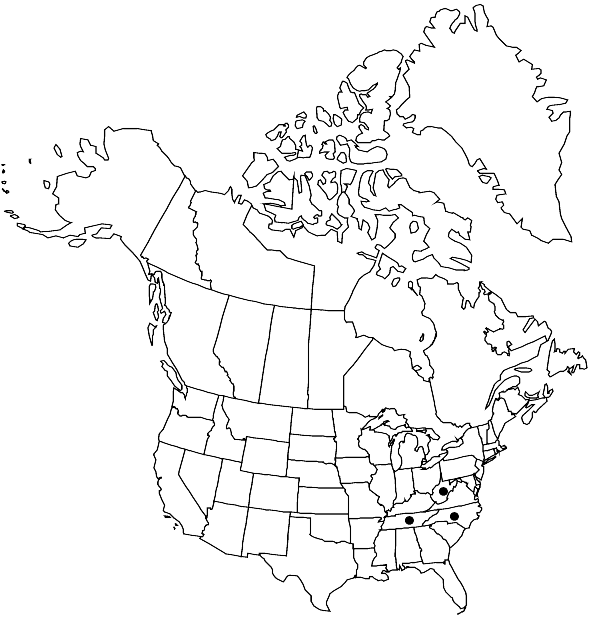Syntrichia ammonsiana
Fragm. Florist. Geobot. 37: 212. 1992,.
Stems 5–10 mm. Leaves infolded and twisted when dry, recurved when moist, broadly spatulate, 1.5–2.5 × 0.6–0.8 mm; margins plane, entire before but with a few teeth near the apex; apices acute; costa percurrent, yellow or brown, smooth; basal cells abruptly differentiated, narrower toward the margins; distal cells quadrate to hexagonal, 10–15 µm, bulging, with about 4 papillae per cell. Specialized asexual reproduction propagula borne on stalks in axils of distal leaves, leaf-like, 0.25–0.45 mm, green, papillose, costate. Sexual condition dioicous (perigonia and sporophytes unknown).
Habitat: Sandstone in deep shade
Elevation: moderate elevations
Distribution

N.C., Tenn., W.Va., South America (Peru), Africa (South Africa).
Discussion
Syntrichia ammonsiana can easily be distinguished from S. chisosa by its 1-stratose laminae.
Selected References
None.